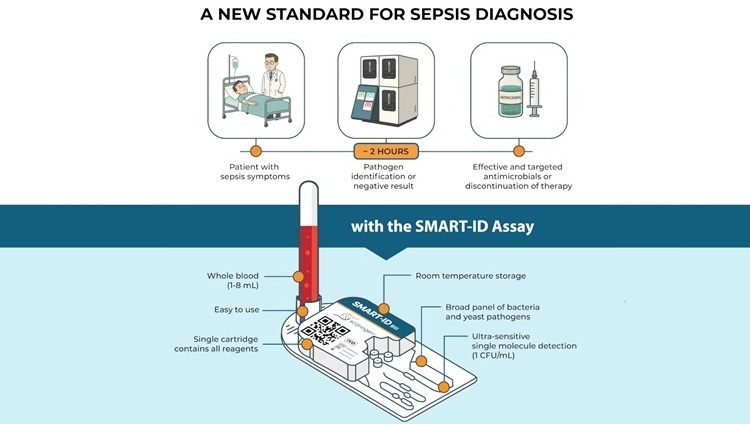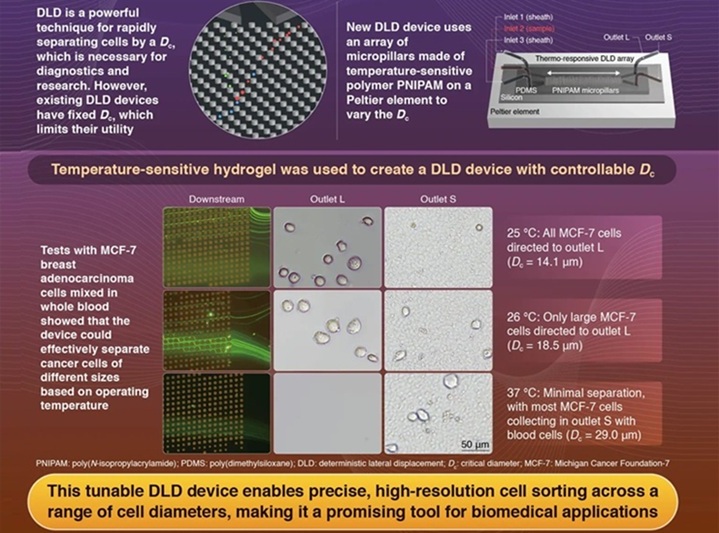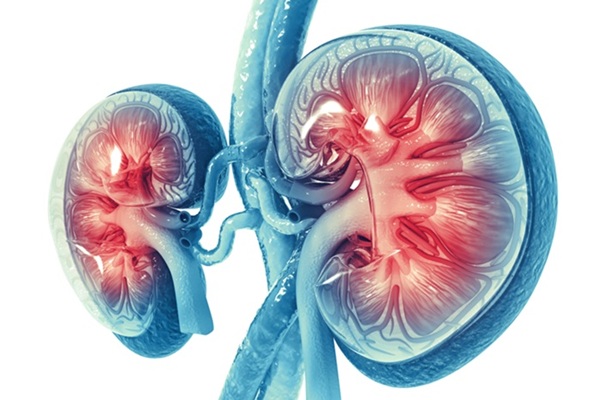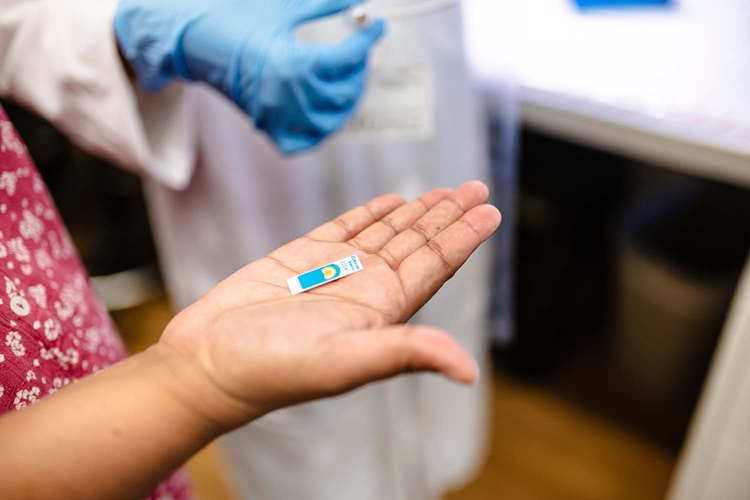AI Paving the Way for New Generation of Medical Diagnostic Devices
|
By LabMedica International staff writers Posted on 22 Aug 2019 |
The development of deep learning and neural networks has led to artificial intelligence (AI) gaining learning capabilities, as a result of which some new AI tools are now better than human eyes at recognizing patterns. This is paving the way for the emergence of a new generation of medical diagnostic devices that are capable of surpassing the detection skills of the best medical practitioners.
These are the latest findings of Research and Markets, (Dublin, Ireland), a global market research company.
The ability to replicate AI has made the expertise of such medical diagnostic devices accessible to a large number of patients. Additionally, AI finds numerous and diverse applications in medical diagnostics, such as image analysis for tumor detection, video detection for gait disorders and fall prediction, biochemical tests such as for diabetes or speech analysis of emotional state and psychiatric disorders. Hence, AI will significantly disrupt the traditional model of medical diagnosis.
Since 2016, companies working on the development of AI for medical imaging have made investments of more than USD 1.1 billion. In addition to big medical diagnostic systems manufacturers, the number of Intellectual Property (IP) newcomers is also important and growing. Unlike as in the case of development of new medical devices, the costs for developing AI software are moderate. As a result, the number of IP newcomers developing innovative software is likely to continue to increase sharply over the coming years.
The emergence of several new companies, coupled with the various advantages and new applications of AI for medical diagnostics, makes it crucial to understand the IP position and strategy of the different players. An analysis of the time evolution of patent publications reveals that the development of medical diagnostic systems with built-in computer-assisted detection features is not new, and the first patents related to this topic were published in the 1980s. During the 1990s, Japanese manufacturers of medical imaging systems began investing in investigations into this field to be soon followed by European companies and later by American companies. The number of patent families published each year increased progressively until 2015 and has increased rapidly since then, with more than 1,100 new patent families published in 2018. This indicates that AI in medical diagnostics is a very hot topic that is mobilizing great R&D efforts from different players.
Among the players who have filed patents related to AI in medical diagnostics, over 90 are newcomers, out of which most are startup firms currently developing their first products. These products include software solutions such as software for ultrasound imaging analysis, image resolution improvement or real-time brain monitoring, or medical devices that are capable of live analysis of biological parameters, such as blood glucose monitoring apparatus, sleep monitoring sensors and ECG. Several IP newcomers are based in the US while some are based in Israel, in Europe or in Asia. Some of these innovative companies could become one of the next healthcare unicorns, making them potential acquisition targets for big corporations.
Related Links:
Research and Markets
These are the latest findings of Research and Markets, (Dublin, Ireland), a global market research company.
The ability to replicate AI has made the expertise of such medical diagnostic devices accessible to a large number of patients. Additionally, AI finds numerous and diverse applications in medical diagnostics, such as image analysis for tumor detection, video detection for gait disorders and fall prediction, biochemical tests such as for diabetes or speech analysis of emotional state and psychiatric disorders. Hence, AI will significantly disrupt the traditional model of medical diagnosis.
Since 2016, companies working on the development of AI for medical imaging have made investments of more than USD 1.1 billion. In addition to big medical diagnostic systems manufacturers, the number of Intellectual Property (IP) newcomers is also important and growing. Unlike as in the case of development of new medical devices, the costs for developing AI software are moderate. As a result, the number of IP newcomers developing innovative software is likely to continue to increase sharply over the coming years.
The emergence of several new companies, coupled with the various advantages and new applications of AI for medical diagnostics, makes it crucial to understand the IP position and strategy of the different players. An analysis of the time evolution of patent publications reveals that the development of medical diagnostic systems with built-in computer-assisted detection features is not new, and the first patents related to this topic were published in the 1980s. During the 1990s, Japanese manufacturers of medical imaging systems began investing in investigations into this field to be soon followed by European companies and later by American companies. The number of patent families published each year increased progressively until 2015 and has increased rapidly since then, with more than 1,100 new patent families published in 2018. This indicates that AI in medical diagnostics is a very hot topic that is mobilizing great R&D efforts from different players.
Among the players who have filed patents related to AI in medical diagnostics, over 90 are newcomers, out of which most are startup firms currently developing their first products. These products include software solutions such as software for ultrasound imaging analysis, image resolution improvement or real-time brain monitoring, or medical devices that are capable of live analysis of biological parameters, such as blood glucose monitoring apparatus, sleep monitoring sensors and ECG. Several IP newcomers are based in the US while some are based in Israel, in Europe or in Asia. Some of these innovative companies could become one of the next healthcare unicorns, making them potential acquisition targets for big corporations.
Related Links:
Research and Markets
Latest Industry News
- Abbott Acquires Cancer-Screening Company Exact Sciences
- Roche and Freenome Collaborate to Develop Cancer Screening Tests
- Co-Diagnostics Forms New Business Unit to Develop AI-Powered Diagnostics
- Qiagen Acquires Single-Cell Omics Firm Parse Biosciences
- Puritan Medical Products Showcasing Innovation at AMP2025 in Boston
- Advanced Instruments Merged Under Nova Biomedical Name
- Bio-Rad and Biodesix Partner to Develop Droplet Digital PCR High Complexity Assays
- Hologic to be Acquired by Blackstone and TPG
- Bio-Techne and Oxford Nanopore to Accelerate Development of Genetics Portfolio
- Terumo BCT and Hemex Health Collaborate to Improve Access to Testing for Hemoglobin Disorders
- Revvity and Sanofi Collaborate on Program to Revolutionize Early Detection of Type 1 Diabetes
- GSI Group Acquires Blood Processing Equipment Manufacturer GenesisBPS
- ELITech and Hitachi High-Tech to Develop Automated PCR Testing System for Infectious Diseases
- Lumiquick Acquires Aoxre to Expand Global IVD and Research Capabilities
- Lunit and Agilent Partner to Develop AI-Powered Cancer Diagnostics
- Qiagen and Oxford Gene Technology Partner on Sequencing Panel Interpretation
Channels
Clinical Chemistry
view channel
Chemical Imaging Probe Could Track and Treat Prostate Cancer
Prostate cancer remains a leading cause of illness and death among men, with many patients eventually developing resistance to standard hormone-blocking therapies. These drugs often lose effectiveness... Read more
Mismatch Between Two Common Kidney Function Tests Indicates Serious Health Problems
Creatinine has long been the standard for measuring kidney filtration, while cystatin C — a protein produced by all human cells — has been recommended as a complementary marker because it is influenced... Read moreMolecular Diagnostics
view channel
Simple Urine Test to Revolutionize Bladder Cancer Diagnosis and Treatment
Bladder cancer is one of the most common and deadly urological cancers and is marked by a high rate of recurrence. Diagnosis and follow-up still rely heavily on invasive cystoscopy or urine cytology, which... Read more
Blood Test to Enable Earlier and Simpler Detection of Liver Fibrosis
Persistent liver damage caused by alcohol misuse or viral infections can trigger liver fibrosis, a condition in which healthy tissue is gradually replaced by collagen fibers. Even after successful treatment... Read moreHematology
view channel
Platelet Activity Blood Test in Middle Age Could Identify Early Alzheimer’s Risk
Early detection of Alzheimer’s disease remains one of the biggest unmet needs in neurology, particularly because the biological changes underlying the disorder begin decades before memory symptoms appear.... Read more
Microvesicles Measurement Could Detect Vascular Injury in Sickle Cell Disease Patients
Assessing disease severity in sickle cell disease (SCD) remains challenging, especially when trying to predict hemolysis, vascular injury, and risk of complications such as vaso-occlusive crises.... Read more
ADLM’s New Coagulation Testing Guidance to Improve Care for Patients on Blood Thinners
Direct oral anticoagulants (DOACs) are one of the most common types of blood thinners. Patients take them to prevent a host of complications that could arise from blood clotting, including stroke, deep... Read moreImmunology
view channel
New Test Distinguishes Vaccine-Induced False Positives from Active HIV Infection
Since HIV was identified in 1983, more than 91 million people have contracted the virus, and over 44 million have died from related causes. Today, nearly 40 million individuals worldwide live with HIV-1,... Read more
Gene Signature Test Predicts Response to Key Breast Cancer Treatment
DK4/6 inhibitors paired with hormone therapy have become a cornerstone treatment for advanced HR+/HER2– breast cancer, slowing tumor growth by blocking key proteins that drive cell division.... Read more
Chip Captures Cancer Cells from Blood to Help Select Right Breast Cancer Treatment
Ductal carcinoma in situ (DCIS) accounts for about a quarter of all breast cancer cases and generally carries a good prognosis. This non-invasive form of the disease may or may not become life-threatening.... Read moreMicrobiology
view channel
Rapid Diagnostic Test Matches Gold Standard for Sepsis Detection
Sepsis kills 11 million people worldwide every year and generates massive healthcare costs. In the USA and Europe alone, sepsis accounts for USD 100 billion in annual hospitalization expenses.... Read moreRapid POC Tuberculosis Test Provides Results Within 15 Minutes
Tuberculosis remains one of the world’s deadliest infectious diseases, and reducing new cases depends on identifying individuals with latent infection before it progresses. Current diagnostic tools often... Read more
Rapid Assay Identifies Bloodstream Infection Pathogens Directly from Patient Samples
Bloodstream infections in sepsis progress quickly and demand rapid, precise diagnosis. Current blood-culture methods often take one to five days to identify the pathogen, leaving clinicians to treat blindly... Read morePathology
view channel
Tunable Cell-Sorting Device Holds Potential for Multiple Biomedical Applications
Isolating rare cancer cells from blood is essential for diagnosing metastasis and guiding treatment decisions, but remains technically challenging. Many existing techniques struggle to balance accuracy,... Read moreAI Tool Outperforms Doctors in Spotting Blood Cell Abnormalities
Diagnosing blood disorders depends on recognizing subtle abnormalities in cell size, shape, and structure, yet this process is slow, subjective, and requires years of expert training. Even specialists... Read moreTechnology
view channel
Artificial Intelligence Model Could Accelerate Rare Disease Diagnosis
Identifying which genetic variants actually cause disease remains one of the biggest challenges in genomic medicine. Each person carries tens of thousands of DNA changes, yet only a few meaningfully alter... Read more






















